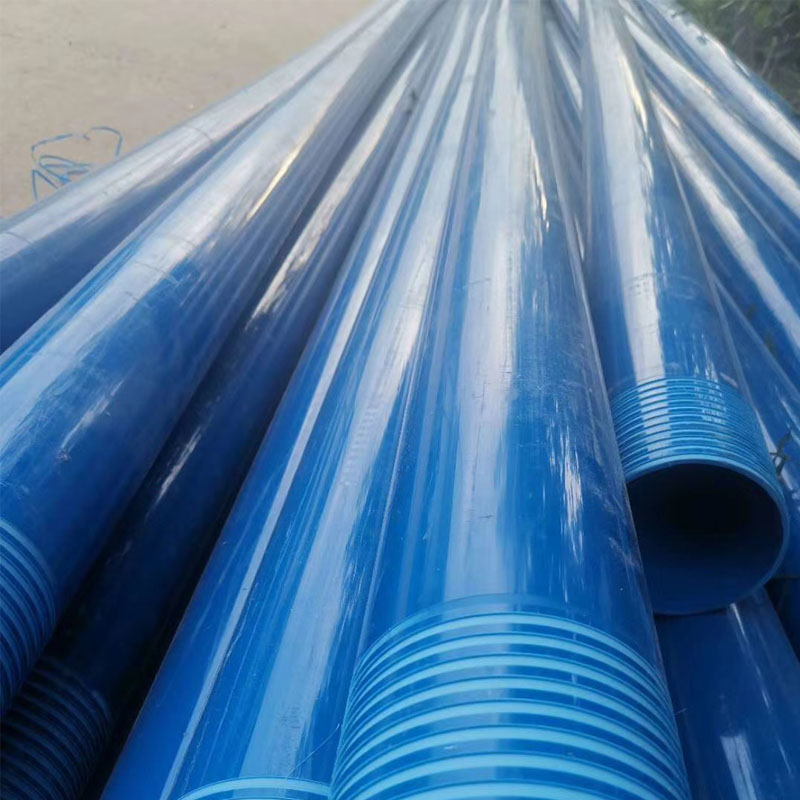Aug . 13, 2024 03:00 Back to list
Common Applications of PVC Pipe in Various Plumbing Projects and Systems
What is PVC Pipe Used For in Plumbing Products?
PVC, or polyvinyl chloride, is one of the most widely used materials in plumbing systems across the globe. Its unique chemical structure and physical properties make it an ideal choice for a myriad of plumbing applications. Understanding what PVC pipe is used for in plumbing products sheds light on why it has become a staple in both residential and commercial plumbing.
Versatile Applications
One of the hallmarks of PVC pipe is its versatility. It can be used for various plumbing purposes, including water supply lines, drainage systems, and vent pipes. Due to its lightweight nature, PVC is easy to transport and install, making it a favored choice for contractors and DIY enthusiasts alike.
1. Water Supply Lines In many plumbing systems, PVC pipes are the preferred choice for transporting clean water. Unlike metal pipes, which can corrode over time, PVC is resistant to rust and is not affected by the chemicals commonly found in drinking water. This chemical inertness ensures that the water supply remains uncontaminated, making it safer for consumption. Moreover, the smooth interior of PVC pipes minimizes turbulence, which can enhance water flow efficiency.
2. Drainage Systems PVC pipes are also extensively used in drainage and waste systems. Their ability to handle wastewater without degrading makes them a practical choice for sewer and stormwater drainage applications. A significant advantage of PVC in drainage systems is its resistance to chemical erosion, ensuring longevity even in harsh conditions. The joints in PVC piping systems are designed to create a watertight seal that minimizes leaks, crucial for efficient waste management.
3. Vent Pipes In addition to carrying water and waste, PVC pipes are invaluable in venting applications. Proper venting is crucial in any plumbing system as it allows sewer gases to escape and ensures that drains function correctly. PVC vent pipes can efficiently transport these gases outdoors, preventing the buildup of pressure and the potential for hazardous conditions inside buildings.
what is pvc pipe used for in plumbing products

Advantages Over Other Materials
PVC offers several advantages over traditional materials like copper or galvanized steel. The cost-effectiveness of PVC is perhaps one of its most appealing traits. The materials used to produce PVC are relatively inexpensive, resulting in lower overall project costs. Additionally, PVC’s lightweight nature reduces transportation and installation expenses since it requires less labor and equipment.
Another significant benefit is the ease of installation. PVC pipes can be cut, shaped, and joined with simple tools, and the process typically involves using solvent cement to bond the pieces together. This straightforward installation process can save considerable time and labor costs, making it an attractive option for both commercial projects and personal DIY tasks.
Durability and Longevity
PVC pipes are remarkably durable and can last for decades without needing replacement. They are resistant to environmental stressors, including UV rays and changes in temperature, which contribute to their longevity. This durability makes PVC an environmentally friendly option, as it reduces the need for frequent replacements and minimizes waste.
Conclusion
In conclusion, PVC pipes play an essential role in modern plumbing systems. Their versatility, cost-effectiveness, and durability make them an ideal choice for various applications, including water supply lines, drainage systems, and vents. As the demand for efficient and reliable plumbing solutions continues to grow, PVC pipes are expected to remain a leading option for both residential and commercial plumbing products. With ongoing advancements in material technology, the future of PVC in plumbing looks promising, ensuring safe and efficient water management for years to come.
-
HDPE Sprinkler Pipe Manufacturers - Quality & Durable Solutions
NewsAug.17,2025
-
Durable DN100 PVC Well Casing Pipes for Reliable Water Supply
NewsAug.16,2025
-
HORON 25mm PPR Plumbing Pipes: Durable, Leak-Proof Water Systems
NewsAug.15,2025
-
Durable UPVC Column Pipes for Submersible Pumps | Efficient Water Flow
NewsAug.14,2025
-
DN100 PVC Well Casing Pipes - Durable & Corrosion-Resistant
NewsAug.13,2025
-
Flexible 32mm HDPE Pipes in Coil | Durable Water & Gas Lines
NewsAug.12,2025

